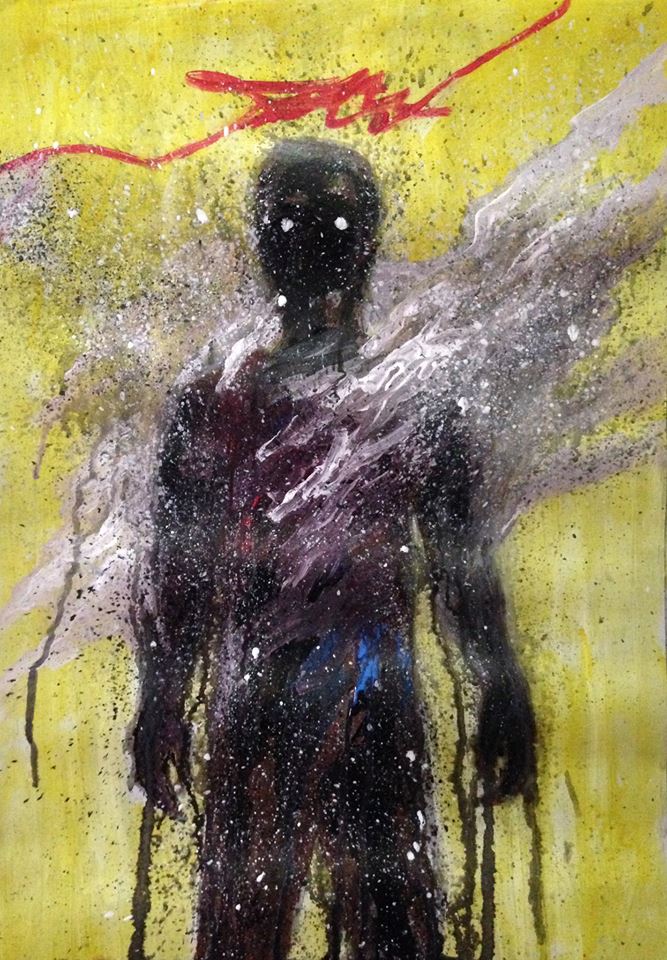The stories of Philippine mythologies include deities, creation stories, mythical creatures, and folk beliefs. These vary among the many indigenous tribes of the Philippines. Some groups during the pre-Spanish conquest era believed in a single Supreme Being who created the world and everything in it, while others chose to worship a multitude of Diwatas and/or Anitos. In ancient Bicol, belief in mythical spirits , creatures, and deities were intricately combined into creation myths, epics, and folktales. Here are some of the more prominent characters.
For more details on the religion of early Bicols, VISIT HERE
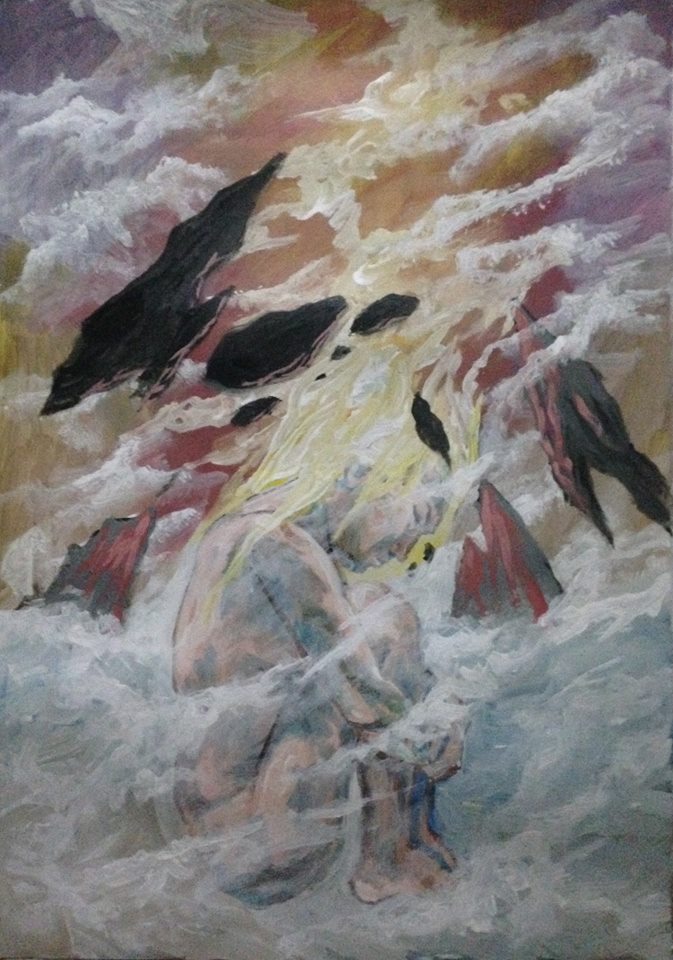
Bicolano Deities in Ancient Philippine Mythology
GUGURANG – Gugurang loomed high in the Bikol pantheon of gods. He was their (the people’s) benefactor, guide and defender against the god of evil, Aswang, who would anger Gugurang by inciting the people to rebel against the good god, do evil deeds and resort to sloth and easy pleasures. Seeing this, Gugurang would punish and pounce on Aswang and to his people, he gave protection and exhorted them to make sacrifices in order to appease his anger. The myths disclose him as a powerful and loving god who would vent his fury mercilessly on the transgressor but would shower them with gifts and protection in return. (Realubit, Bikols of the Philippines, p. 10).
It is believed that ancient people looked up to him with great respect as they fervently gestured to the skies and spoke with profound affection for a great lord whom they adored, revered, and feared.
‘Assistants’ of Gugurang:
Linti – controls lightning
Dalodog – controls thunder
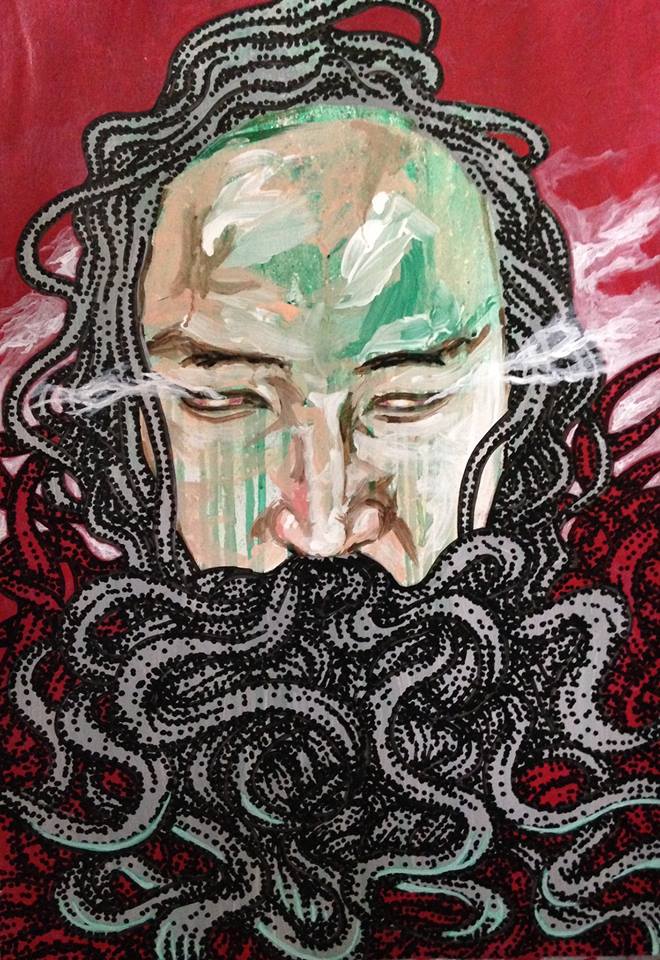
ASUANG – Brother of Gugurang; an evil god who wanted Gugurang’s fire, and gathered evil spirits and advisers to cause immortality and crime to reign; vanquished by Gugurang but his influence still lingers.
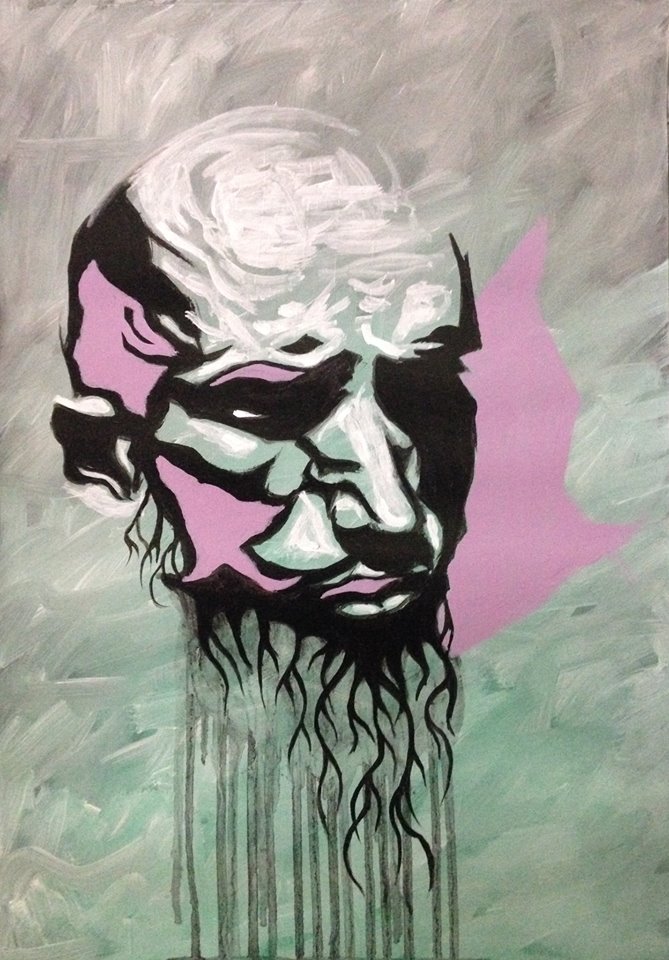
BATALA – Batala was a special being inferior in power to Gugurang whose mission was to provide peace to a village under its special care. Thus it was believed that the village that enjoyed peace and was successful in its wars was due to the influence of a Batala which Gugurang has assigned to it as its custodian.
LANGUITON – The god of the sky
TUBIGAN – The god of water and the celestial ocean, ruled over all the swimming beast.
DAGAT – goddess of the sea.
PAROS –god of the wind; married to Dagat
DAGA – After the death of Paros, Daga, being the eldest son, succeeded in the control of the winds.
ADLAO – Son of Dagat and Paros; joined Daga’s rebellion and died; his body became the sun; in another myth, he was alive and during a battle, he cut one of Bulan’s arm and hit Bulan’s eyes, where the arm was flattened and became the earth, while Bulan’s tears became the rivers and seas.
BULAN – Son of Dagat and Paros; joined Daga’s rebellion and died; his body became the moon;in another myth, he was alive and from his cut arm, the earth was established, and from his tears, the rivers and seas were established.
BITUOON –Daughter of Dagat and Paros; accidentally killed by Languit during a rage against his grandsons’ rebellion; her shattered body became the stars.
CAGURANGAN – Former supreme to Gugurang and Asuang, until Gugurang proved to be far more powerful and superior. Cagurangan had control over the winds and all the flying beast.
MAGINDANG – The god of fishing who leads fishermen in getting a good fish catch through sounds and signs.
BAKUNAWA – Believed to be the cause of eclipse, Bakunawa is the deity of the deep and the underworld.
KALAON – an evil god of destruction.
SON OF KALAON – son of Kalaon who defied his evil father’s wishes.
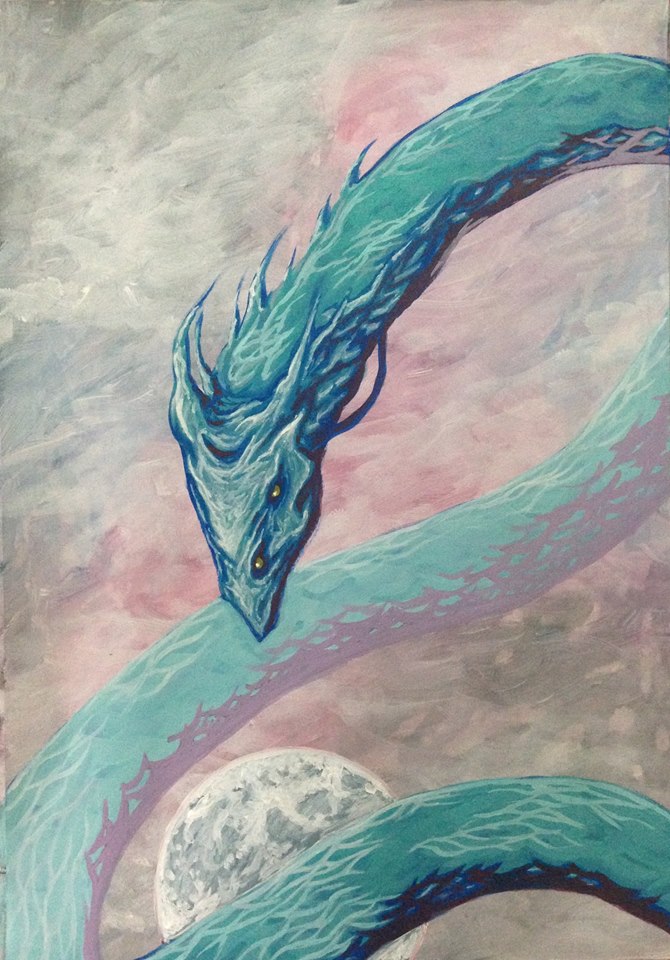
ONOS – Freed the great flood that changed the land’s features
OKOT – The forest god whose whistle would lead hunters to their prey.
ORYOL – A demi-goddess in Bicolano myths, she is mentioned in the Ibalong Epic. A wily serpent who appeared as a beautiful maiden with a seductive voice; admired the hero Handyong’s bravery and gallantry, leading her to aid the hero in clearing the region of beasts until peace came into the land
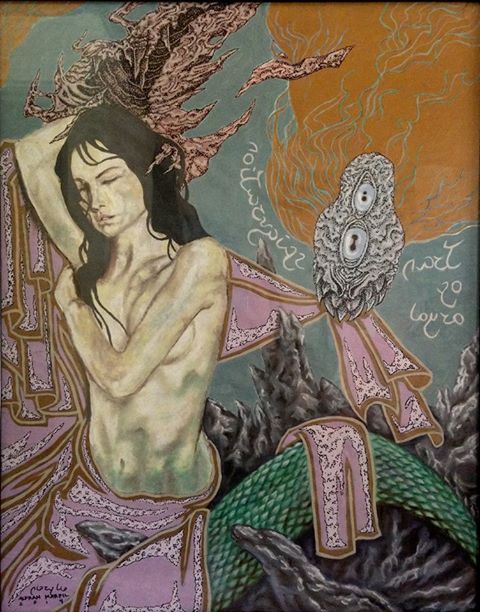
ANITO – Ancestral spirits venerated in communities and households, little wooden idols depict them. Believed to guide their living descendants and bring graces and good fortune.
(SOURCES FOR DEITIES)
Asuang Steals Fire from Gugurang. Ethnography of The Bikol People, ii. Vibal, H. (1923).
CCP Encyclopedia of Philippine Art: Peoples of the Philippines. Cultural Center of the Philippines. Tiongson, N. G., Barrios, J. (1994).
Ethnography of the Bikol People. vii. Beyer, H. O. (1923).
The Origin of Earth and of Man. Ethnography of the Bikol People, vii. Arcilla, A. M. (1923).
Bikols of the Philippines. A.M.S. Press. Realubit, M. L. F. (1983).
un pequeño fragmento inedito en verso. Castaño, F. J. (1895).
The Story of ASUANG & GUGURANG
Long ago, the good and evil Gods lived in harmony. There was an understand among them as they created balance in the world. Two, who some claim were siblings, lived opposite one another. Gugurang, the good God, lived inside Mt. Mayon. Asuang, the evil God, inside Mt. Malinao. Gugurang controlled fire and thus controlled the people. When he was displeased with them he would make the earth rumble from within the depths of Mt. Mayon. If he felt the people’s behaviour was unforgivable he would make the volcano erupt and wipe them out.
Asuang had no control over the people. Jealous of Gugurang’s power, he begged for fire. Gugurang refused. He knew Asuang’s intention was to gain favour by giving it to the people. They argued for what seemed an eternity, but Gugurang stood strong. Asuang made himself invisible and located the fire. He was able to distract the guards with gold. He placed the fire inside a coconut shell and raced back toward Mt. Malinao.
Gugurang knew what Asuang had done when the throne room went dark. Unable to control his new power, Asuang set the world ablaze. Every village that Asuang passed burst into flame. Gugurang followed the fire and eventually caught up to Asuang. He took back the flame and returned it to Mt. Mayon. cried for the Gods to help him control the spreading flames and it began to rain continuously.When the fire was stopped he took revenge on Asuang by ordering lightning and thunder to attack Mt. Malinao.
The people never forgave Asuang for the evil and destruction he had bestowed upon them.
The Story of HALIYA & BAKUNAWA
Beliefs surrounding Haliya are still being researched and it is unknown whether it was a pre-colonial belief. Modern literature says that Haliya is the Bicolano goddess of the moon and is considered the arch-enemy of the moon eating serpent, Bakunawa. She is in constant battle with the giant beast as it pursues its insatiable hunger for the moon. Amazed by its beauty, Bakunawa rises from the ocean and tries to swallow it. During a lunar eclipse, some ancient Filipinos believed Bakunawa had temporarily succeeded in swallowing the moon. The Haliya ritual was performed to dissuade him.
One of the fiestas that celebrated with more apparatus and agaraba, the dreadful noise of drums, atables and balalongs or recessed logs, was dedicated to the moon in full, a party that they called Halia. And they made this party with such a deafening and truly wild noise, to prevent the Baconaua, a harmful and very warped animal, from swallowing the moon and leaving them in darkness, which they greatly felt, and those which they had as a sign of some future disaster or terrible misfortune that, ravaging their fecund soil, left them wrapped in the greatest misery. As the eclipses coincide with the full moon, they undoubtedly believed that the rainbow, which they called Hablong-dauani, was the work of an ancient and famous weaver whom they qualified by name, and what they said to be the mother of the weavers of later times. To avoid, then, that the Baconaua swallowed the moon, or rather to celebrate such a feast, the women of all tribes or duluhan used to gather together, and placed in two rows, forming a choir, they began to sing the excellences of the moon that with its beautiful and clear light towards the night splendid day, preserving the charms of a cool and calm temperature. This ceremony or superstitious rite used to lead to all, menu of tuba and carabao meat or wild boar, enlivened by the monotonous and languid compass of noisy zambra, dawned as lethargic and drunk, effect of the spirited liquor with wild abundance encaged in rough glasses of coconut shell, and distributed among the concurrent. ~ SHORT GLIMPSE ON THE ORIGIN, RELIGION, BELIEFS AND SUPERSTITIONS OF THE ANCIENT NATIVES OF BICOL by Fray Jose Castaño – 1895
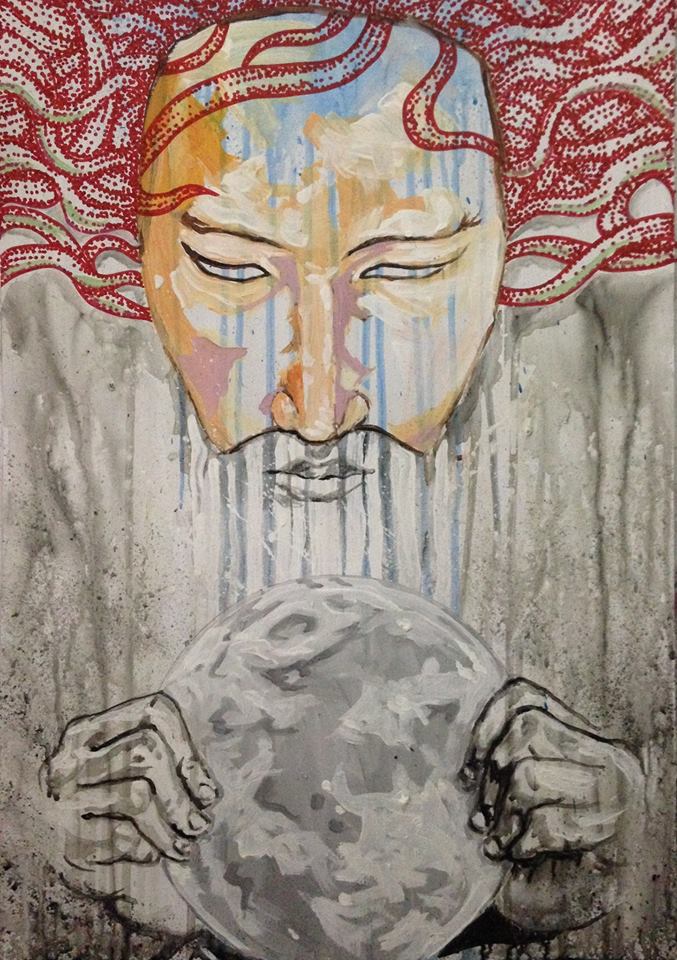
Bicolano Creatures & Spirits
ANDUDUNO – In Bicolano folklore, an Aswang that could smell if a person is terminally ill. It prowls outside or under the house of the victim and uses its very long, snake-like tongue to lick the sick person until the victim dies. Sometimes it waits outside the house of a dying person. Once that person dies and has been buried, it digs up and eats the corpse.
AGALON HAYOPAN – (Bicol) Inactive aswangs, they prefer to live right by the river where crocodiles are plentiful. They desire to eat human flesh and employ crocodiles to kill people and discreetly bring their flesh to them.
(Source: Filipinas Volume 12, Page 53, Filipinas Pub., 2003)
ANANANGGAL – (Bicol) Anananggal ormanananggal is a kind of witch that with its supernatural powers is able to detach its upper torso from the rest of its body and flies with its trailing intestines in search of a victim, leaving its lower torso behind. This happens only at night. It has to come back before the rays of the sun strike any portion of the separated body.
One can kill an anananggal by putting garbage, ashes or salt on the detached lower torso so it can no longer reattach to its upper torso. The ananaggal has bat-like wings. It is a beautiful woman at day, but a monster at night. The anananggal avoids saringsing or kagingking as this will tear its wings. Its entrails may also get entangled with the thorns of the marurugi. Common belief.
(source: Bikol Beliefs and Folkways, Eden K. Nasayao, PhD, Hablong Dawani Publishing House, 2010)
ANGONGOLOOD –Through more in-depth translations of the Ibalong Epic of Bicol, this is the being that is thought to be described in stanza 31 when translated to Bicolano.
Los pongos y orangutangs
La miraban con horror,
Porque las aguas del Bicol
Con su sangre coloro.
The pongos and orangutans
Watching the fight filled with horror stung,
With color due to crocodiles blood
He tinged the Bicol River red.
Bicolano folklore says the angongolood looks like a gorilla and inhabits swamps and riverbanks. It can turn people into trees by pouncing on them as they pass. It is reported that some people passing in boats will strikes the sides to create enough noise to frighten off the angongolood.
(source: Bikols of the Philippines, Maria Lilia F. Realubit, A.M.S. Press, 1983 | Bikol Voices Anthology, Merito B. Espinas, Caesar C. Altarejos, Carlos S. Gegantoca, Bikol University, 1983)
ASWANG – (Witch Aspects, Were-Beast Aspects, Viscera Sucker Aspect, Blood sucker Aspect) Shape-shifting demon, human-like by day but transform into different monstrous form at night. By day, they look like a beautiful, silent maidens dwelling in a simple nipa hut, but by night Bird they become a terrible fiend that feeds to human flesh and blood. They can make humans be like them whenever they serve flesh food (which is actually human flesh) and whenever you swallow something inflicted by their saliva. Their power can be also transferred just like that of Amaranhig. They harass and eat awake humans at night, especially pregnant women who are about to give birth. Aswangs can change from a human to an animal form, usually as a bat, a pig or a black dog. Some aswangs can change form at will, others through the use of foul oils concocted by evil magicians. Aswangs appear at night to prey upon unwary travelers or sleeping people. It is said that they have a peculiar liking for the taste of human liver.
ASUWANG NA LAKAW – (Bicol) A classification of asuwang detailed by Francis Lynch, S.J. in his paper “An Mga Asuwang: A Bicol Belief”. This kind of asuwang, the walking species, is by far the most common. Asuwang na lakaw decides, about 6 p.m., where he or she operates that night by putting his ear to the rice mortar and listening to sounds of mourners, or listens for such sounds while standing on his head, resting in a shallow hole in the ground, or, say others, removing the cover of a specially made listening well and listening. At 8 o’clock he leaves for his operations. Some claim this asuwang uses a special concoction rubbed over its body (a premixed ointment consisting of chicken dung and coconut oil).
(source: An Mga Asuwang: A Bicol Belief, Francis X. Lynch, S.J., 1949 | The Creatures of Philippine Lower Mythology, Maximo Ramos, 1990 Phoenix Publishing)
ASUWANG NA LAYOG – (Bicol) A classification of asuwang detailed by Francis Lynch, S.J. in his paper “An Mga Asuwang: A Bicol Belief”. There are two kinds of flying asuwang: the simple asuwang na layog, and the anananggal. They differ in that the latter type leaves its trunk and limbs in some secluded spot while the head and entrails take to the air. The former flies with its entire body intact.
Lynch, from his compilation of Bikol asuwang studies, revealed that the anananggal goes into the hidden portion of the house or a secluded area, then, “…..dipping his right hand into the foul smelling ointment which he has prepared, applies it on the line beginning from the tip of of the little finger of the left hand, progressing the length of the arm to the armpit, thence down his left side and the outer side of his left leg, ending at the tip of the little toe. Then the left hand is dipped into the chicken dung mixture and the process is duplicated on the right side of the body. During the operations, he repeats to himself, but alone, the following formula or its equivalent: Siri siri daing Diyos kung banggi, labaw sa kahoyan, lagbas sa kasirongan! Literally translated, the formula reads, “siri, siri, there is no God at night, over trees, under houses.”
Supposedly after the application of the chicken dung mixture, an oily membrane appears on both sides of the body, more like flying skin folds. For the ordinary layog, he needs only to jump and hop for momentum before he ascends to the night sky. The anananggal reacts differently. Propping himself against a wall, if there be one, through magic he is then presumed to detach himself from his lower limbs. The cry kakak or kikik is heard in the process of flight.
The anananggal creature perches on the roof where he droolingly awaits his next meal, and it is his long thread-like tongue that passes through the roof shingles.
(source: An Mga Asuwang: A Bicol Belief, Francis X. Lynch, S.J., 1949)
ASWANG NA LUPAD – (Bicol) Another name used in Bicol for the flying aswang.
(source: The Aswang Complex in Philippine Folklore, Maximo Ramos, 1990, Phoenix Publishing
BONḠAN – (Bicol) Demonic dwarves and malignant spirits of the early Bicolanos.
(source: DICCIONARIO MITOLÓGICO DE FILIPINAS, Ferdinand Blumentritt [1895], translated and republished by The Aswang Project, 2021)
BONGGO – (Bicol) Bonggo is a human-like monster whose eyes spew out fire. It burns everything it sees. It is afraid to cross rivers as when he touches water, its fire is extinguished. And when this happens, it dies. Its victims are mostly women. This is because it is in constant search for its wife, the aswang, who deserted it.
(source: Bikol Beliefs and Folkways, Eden K. Nasayao, PhD, Hablong Dawani Publishing House, 2010)
BORINGKANTADA – (Bicol) A boringkantada is a beautiful woman that closely guards a heap of untold riches and treasures. Possessed with such physical beauty, and an unbelievably beautiful voice, it whiles away its time by singing to itself. When someone, lured by the ethereal beauty of its plaintive song, draws near, the boringkantada would think that its treasure will be stolen. It then becomes vicious, and its jealousy is so that it would immediately suck the blood out of anyone who dares come near it or its treasure.
(source: Bikol Beliefs and Folkways, Eden K. Nasayao, PhD, Hablong Dawani Publishing House, 2010)
BUGSOK – (Bicol) Bugsok is a black fairy that walks with its feet up and its hands down. It buries objects like stones, sticks, and fish bones into people’s bodies causing victims to be seriously ill. The herbulario can cure such ailment, and can pick out a stone or fishbone or whatever from a body where the bugsok “buried” them. The Bugsok is the cruel son of the maligno. It lives in the thick forests where there are big ants and spiders. If it happens to be harmed by playing children, it causes them to swell from the knees down. This will give them so much pain, and the condition will make the children raise their legs and use their hands to walk. Eventually the victims also become bugsok, or turned upside down.
(source: Bikol Beliefs and Folkways, Eden K. Nasayao, PhD, Hablong Dawani Publishing House, 2010)
DARUANAK – In Bicolano folklore, a gigantic turtle-like but hairy sea monster. Once it lived on land but because of its gradual growth it took to the sea in order to move freely.
DIDIT – (Bicol) Didit is an earth cricket, whose nocturnal chirp signifies the death of a relative.
(source: Bikol Beliefs and Folkways, Eden K. Nasayao, PhD, Hablong Dawani Publishing House, 2010)
DWENDE – (Bicol) A dwende is a short, long-bearded old man who dwells in a ponso, or a mound resembling an ant hill. Those who inhabit rivers are called water dwarves. Dwarves are classified as black or white. The white dwarves are happy and do not harm humans. They live in ceilings and attics and sometimes the owner of the house hears their laughter. The black dwarves are malevolent and could cause illness and death. When black dwarves inhabit a house, the members of the house meet all kinds of misfortune. The dwende is full of mischief—it steals money or food, or a thing that may take its fancy. Some dwendes live in a mound on the ground. If a man happens to urinate on its abode, it can cause bongao or inflammation of the man’s genitals. They are helpful and like to live with humans. Sometimes they are offended and cause illness or even death of the persons with whom they live. Clothes must be taken from the clothesline before dark lest they be stolen and worn by dwendes.
(source: Bikol Beliefs and Folkways, Eden K. Nasayao, PhD, Hablong Dawani Publishing House, 2010)
ENGKANTOS – (Bicol) An engkanto is any enchanted creature—and much like human beings, they vary in form, attitude, and powers we can never understand nor fathom. They inhabit our world, and can see us, but, more often than not, we are unable to see and mingle with them unless they allow us to do so. An engkanto is an enchanted creature that can assume an assortment of images. It may be a dog, a cat, a beggar or a beautiful woman. It does this when it wants to enchant human beings. Before bathing in the river, one needs the permission of the engkantos. An engkanto is usually invisible; if “seen by the human eye” it is said to be very white or very bright. If it gets angry or falls in love with a human, the latter falls ill or dies. Engkantos are like human beings in appearance and habits. However, they envy humans because the latter occupy and enjoy the visible world. When children are alone, engkantos take pity on them and bring them to its kingdom.
(source: Bikol Beliefs and Folkways, Eden K. Nasayao, PhD, Hablong Dawani Publishing House, 2010)
IBINGAN – A huge and venomous, many-horned red serpent with a prominent crest on its head and dorsal fin on its back. In Bicolano folklore, it is said to guard a cave occupied by water spirits and sea maids. It stations itself at the mouth of the said cave and crushes intruders with its powerful tail.
KABALAN – (Catanduanes, Bicol) Stories of the Kabalan hail from the province Catanduanes in the Bicol region. They are described as horse-like (with 4 legs like a centaur). Hairy from head to toe, with an human face/human likeness to the face. They are said to live in trees and are angered when their homes are disturbed. There are some legends where humans accidentally kill kabalans by burning down their tree-homes through kaingin farming methods. The creatures are merciless though and will curse the offenders with sickness and bad luck until the end of their days.
KADU-KADU – (Bicol) Kadu-kadu is a small creature with pointed ears. The upper part of his body is larger than the lower part.
(source: Bikol Beliefs and Folkways, Eden K. Nasayao, PhD, Hablong Dawani Publishing House, 2010)
KATAMBAY – (Bicol) A term used to by the early people of Bicol to refer to guardian anito.
(source: DICCIONARIO MITOLÓGICO DE FILIPINAS, Ferdinand Blumentritt [1895], translated and republished by The Aswang Project, 2021)
KIKIK – (Bicol) The kikik is a bird so called because of the sound it creates – “kikik”. It is known to be an emissary or servant of the aswang. Wherever there is a kikik sound, an aswang is around. It is also said that when the kikik hovers above, the aswang is below. When the aswang is above, the kikik is below. Some believe the kikik to be a huge owl; some believe it to be a bat with a gift of exceptional sight. Whichever, it has a definite affinity to the aswang, and knows the aswang to be its master. When a kikik is heard in a house where there is a newborn baby, someone should say loudly, “Adi an asin” (Here is the salt).
(source: Bikol Beliefs and Folkways, Eden K. Nasayao, PhD, Hablong Dawani Publishing House, 2010)
KUDO-KUDO – (Bicol) Kudo-kudo, so named because of the sound it creates while walking, is an unseen creature accompanied by mosquitoes. It eats salt and always frequents the kitchen. It is dark and lives under the house, or the silong. It is always dirty and likes to stay in dark, damp and unused spaces below the floorboards of the house. From the research on Kinawitan, Daraga, Albay, by Gerome Alarcio, BCA, Journalism IV. The kudo-kudo is a tiny, round or egg-shaped creature with very small eyes. Its limbs are as small as a needle. Its body is brown and jar-like, and it loves to stay inside wet jars. It is found in grasslands and deep in the forest. The kudo-kudo can harm people when it is hurt. It causes one to shiver with high fever. The shivering is often mistaken for malaria.
(source: Bikol Beliefs and Folkways, Eden K. Nasayao, PhD, Hablong Dawani Publishing House, 2010)
KURAKPAO – (Bicol) Kurakpao is a very untidy and dirty creature that has thick, disheveled hair and with big, piercing eyes. An irate creature, it carries a piece of wood shaped like a huge thick bat and is ready to batter the head of anyone it meets.
(source: Bikol Beliefs and Folkways, Eden K. Nasayao, PhD, Hablong Dawani Publishing House, 2010)
LAQUI – (Bicolano) A frightening creature believed in by the ancient Bicolanos. It has the hair and feet of a goat but the face of an ugly man. It is generally harmless, appearing at night and surprising people with its voice.
(source: Bikol Beliefs and Folkways, Eden K. Nasayao, PhD, Hablong Dawani Publishing House, 2010)
LAYUG/ LAYAP – (Bicol) Layug or Layap. This is a creature that can assume the form of a dog or any creature that can fly (layug) or disappear (layap) at will.
(source: Bikol Beliefs and Folkways, Eden K. Nasayao, PhD, Hablong Dawani Publishing House, 2010)
MAGINDARA – (Bicol) Manguindaras were underwater beings, our local concept of mythical siren. They were regarded as guardian spirits of the ancient Bikol fishermen. It was their belief that the maguindara kept them safe from disasters by forewarning them with shouts and signs on the sea of an approaching storm and aided them by leading the way to a school of fish when they were fishing. Maguindara or serena is a pretty woman from head to waist. She has a fish tail instead of legs. She lives in caves under the sea or behind water falls.
(source: Bikol Beliefs and Folkways, Eden K. Nasayao, PhD, Hablong Dawani Publishing House, 2010)
MAMBABARANG – You will know if you are Nabarang (cursed by Mambabarang) if you will see a white centipede in your house. Albularyos are called to reverse their curse. Mambabarang (summoner) is a witch who uses insects and spirits, and any material to enter the body of anyone they hate and come out disgustingly. A Mambabarang is a kind of a mangkukulam. Mambabarangs are ordinary human beings with black magic who torture and later kill their victims by infesting their bodies with insects. They are different from Mangkukulams – the latter only inflict pain or illness. Mambabarangs use a strand of hair from their chosen victim and tie it to the bugs or worms which they will use as a medium. When they pick the bug, the victim immediately experiences the intended effect.
MANANGILAW or MANANG HILAW – Hairy humanoid giants in the mountains and caves of Bicol. Generally described as having big feet, bodies covered in black hair, deep voices, and vicious-looking faces, these shy and harmless beasts use vines, which some wrap around their waist like belts, to catch fish and shrimp in the river or hunt small animals. In the 1980’s two Manangilaw, a mother and a child, were allegedly captured by soldiers patrolling in Mount Isarog. The two beasts were chained to train wagons for 15 days and were fed with live chicken and cow’s blood. Nobody knows what became of the said creatures.
MANONOPSOP – (Bicol)Manonopsop is a witch with a strong sucking tongue that can extend meters long so it can suck blood from the stomach (usually that of a pregnant woman) of a sleeping victim. It will only stop sucking when the victim is already drained of blood. Usually the mononopsop positions itself from the roof of a house, and lets its thread-like tongue extend to the stomach of its unsuspecting victim.
(source: Bikol Beliefs and Folkways, Eden K. Nasayao, PhD, Hablong Dawani Publishing House, 2010)
NAGINED, MAGKABURAK, and ARAPAYAN – The powerful trinity of demons in the old Ibalong beliefs, said to be three powerfully built handsome men with tattoos covering their faces and whole body. It is said that when they talk they all speak in the same time, and that their true form is a three headed demon. They are demons invoked when one wants to do harm. Even Asuang asks for their help when he wants to cause chaos.
OGRO – (Bicol)Ogro is an ugly dreaded monster that feeds on humans. The gigantic creature usually eats people who are selfish and cruel. The ogro is a black, horrible creature who watches children in their sleep, ready to hit their heads with its big wooden hammer if their heads reach up to the pillows of their parents. It is believed that children become disrespectful when they sleep with their heads on the same level as their parents.
(source: Bikol Beliefs and Folkways, Eden K. Nasayao, PhD, Hablong Dawani Publishing House, 2010)
ONGLO – (Bicol) Onglo is a creature that is about one foot tall; it is very hairy and causes any person who touches its hair to itch all over. The onglo is a human-like creature that has long straight black hair around its body from head to toe. It has clawed feet and long sharp fingernails, and long-pointy ears. Humans can detect an onglo because of the fetid smell. It feeds on the food that is left out to dry in the sun—like dried fish. The onglo is a creature whose upper body is that of a man, and the lower body is that of a horse. Its odor is so sharp that one can smell it from quite a distance. Onglo is a very black and ugly monster whose touch or mere presence causes one’s skin to itch.
(source: Bikol Beliefs and Folkways, Eden K. Nasayao, PhD, Hablong Dawani Publishing House, 2010)
ORIOL – (Bicol) Oriol is the fabulous snake daughter of Aswang, who appears and disappears at will. Her mission is to seduce men. Her beauty and influence were irresistible. A thousand fables were said about this snake- enchantress. Oriol or Irago is the serpent daughter of aswang who could transform herself into a seductive woman or appearand disappear as she pleases. In human form, she looks like a sweet, beautiful maiden with an equally sweet and beautiful voice. She has long, black, wavy, hair; and white, smooth skin. In her other form, she is a huge multi-colored serpent whose scales glisten in the sun. Oriol or Irago is the serpent daughter of aswang, who could transform herself into a seductive woman, or appear and disappear as she wants. Oriol is also a character from the Ibalong epic of Bicol.
(source: Bikol Beliefs and Folkways, Eden K. Nasayao, PhD, Hablong Dawani Publishing House, 2010)
PANTIYANAK – (Bicol) The patiyanak is an aborted baby’s spirit in limbo as it cannot enter heaven. It cries for prayers. The patiyanak is the offspring of an aswang and the devil. It looks like an innocent happy baby but when a human being gets near it, it reverts to its original form and devours the human so fast, and so viciously. The patiyanak is an ugly creature in its true form. It has reddish brown skin with sharp and glowing eyes. Its face is that of a very old man, and its teeth are long and sharp, protruding out of its mouth. The voice of patiyanak causes miscarriage. The patiyanak is an aborted fetus that comes to life to take revenge on its mother. The cry of the patiyanak, which resembles the cry of an infant, foretells that someone in the community is going to die. Patiyanak or tiyanak is also a nocturnal bird which no one can clearly describe, but it is believed to be the soul of an aborted or an unbaptized child since the sound it creates is like that of a crying baby. It can hurt you, or even eat you up. Where a patiyanak’s voice is heard above the house, an aswang lurks under. If the patiyanak’s voice is heard under the house, an aswang hovers above.
(source: Bikol Beliefs and Folkways, Eden K. Nasayao, PhD, Hablong Dawani Publishing House, 2010)
PONGO – Another ape-like creature from Bicolano folklore. This one resembles an Orangutan but twice bigger than a male gorilla and a lot faster than a regular Orangutan.
POPO – Tall and slender with a tail, a scary creature that snorts like a pig and is said his eyes could cause pain and even kill. He drains human and animals of their energy. He is one of Aswangs creatures.
RABOT – (Bicol) Rabot is half-man and half-beast creature that transforms its enemies into stone. A huge monster that resembles a man, and a huge lizard at the same time, it can fly and cast its power on anyone within its vision at will. This half-man and half beast has eyebrows that are so thick and so black that they protrude from its face. Its huge chin is tucked in, like that of a lizard’s, but it has really huge pointed ears that droop down. Its voice is so loud and raspy that it sounds like thunder. He was killed by Bantog using a bolo in the Ibalong Epic.
(source: Bikol Beliefs and Folkways, Eden K. Nasayao, PhD, Hablong Dawani Publishing House, 2010)
SARIMAO – The Sarimao were avenging monsters in the Ibalong Epic that were brutally fierce, ugly, and ruinous. They went after evildoers, usually to those with hidden guilt, who could not be brought to justice. Handyong exiled the Sarimao to Mount Kulasi. Their human equivalents are believed to be those who take the law into their own hands, who have suffered injustice.
TAGO-NGIRIT– (Bicol) Tago-ngirit is a creature that is said to be half-hidden behind trees and leaves as it wears a big smile. Children are afraid of the tago-ngirit whom they might find as they play hide and seek.
(source: Bikol Beliefs and Folkways, Eden K. Nasayao, PhD, Hablong Dawani Publishing House, 2010)
TAMBALUSLOS – A tall humanoid creature from Bicol. Generally black in complexion, it has long and thin legs with big joints, hooves, long thin arms and fingers, and a mane that runs from the back of the head down to its buttocks. It also has wide protruding lips like an ape. Another strange feature of this creature is that it has a long wrinkled penis and loose testicles which dangle on the ground. The creature’s name is derived from this feature which is referred to as ‘luslus’ which means ‘loose and hanging’. The Tambaluslos chases people who wander in the woods. The only way to escape it is to take off your clothes and wear them upside-down. The creature finds this act very hilarious and it will laugh so much that its wide lips would cover its face, therefore preventing it from seeing the victim who in turn will have ample time to escape.
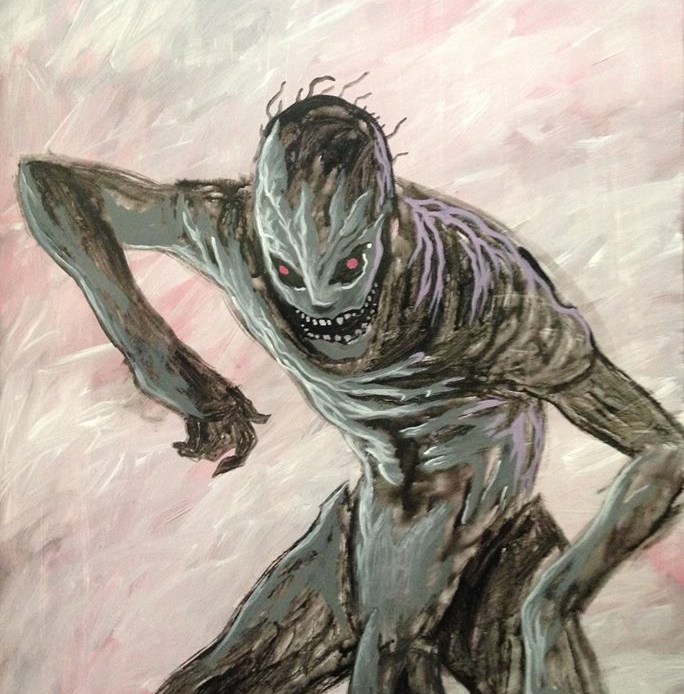
TAWONG LIPOD – A race of mythological creatures in Philippine mythology, most prevalent in Bicol area.
TIBURONES/ Triburon – A shark, with razor sharp teeth, that can fly and circle its prey from the air. ‘Tiburon’ is Spanish for ‘shark’, most English translations of the Ibalon use this name for the creature (Triburon). In Bikol, these creatures are known as Pating na Pakpakan. In the Ibalon epic, they were tamed by the warrior-hero Handyong.
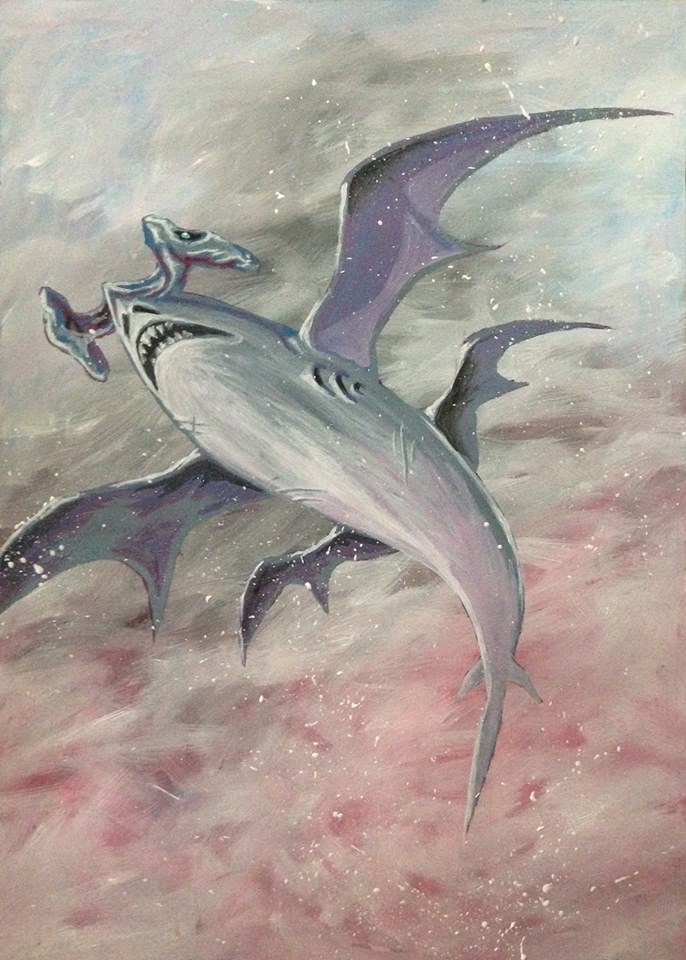
TIKBALANG – (Bicol) Tikbalang is a tall, thin and dark creature that is half human and half horse. While it may have the entire stature of a man, its upper body and face are unmistakably akin to a horse. During full moon he goes out to take a bath and dips his long legs in the river. The tikbalang is a horse-like man. This tall creature has long bony limbs that are disproportioned. When squatting, its knees are taller than its head. It has clawed feet and long hair, with a large mouth, teeth, and huge testicles. The tikbalang is the culprit behind people who get lost in the woods or in the forest. When the tikbalang misleads people in the forest, they are, more often than not, not found again. A person who gets hold of one of the tikbalang’s spines can use it as an anting-anting and makes the tikbalang his slave.
(source: Bikol Beliefs and Folkways, Eden K. Nasayao, PhD, Hablong Dawani Publishing House, 2010)
TIKTIK OR WAKWAK – (Bicol) Tiktik or kikik and wak-wak are birds and are pets of aswang. Their voices announce the coming of their master. The tik-tik assumes its duties at night and looks for a victim for its master, the aswang. When one hears a tik-tik within the perimeters of his house, he must make sure that all the doors are iocked, and all the holes in the house must be sealed, so the tik-tik may not see into the house. This is done extra carefully if there is a baby in the house, or if someone in the house is ill.
(source: Bikol Beliefs and Folkways, Eden K. Nasayao, PhD, Hablong Dawani Publishing House, 2010)
TINGOHAN – (Bicol) The terms tingohan and ting-wan come from the word tingo, which means big sharp teeth. A tingohan is a creature with plenty of big, sharp and pointed teeth. Since it is said that the tingohan stays in the dark, children are scared they might see one while playing hide and seek at night.
(source: Bikol Beliefs and Folkways, Eden K. Nasayao, PhD, Hablong Dawani Publishing House, 2010)
TUPONG-TUPONG – A humanoid creature in ancient Bicol that could stretch its body. It could be as tall as a tree or as short as a child if it wanted.
UNGMANAN – The unseen dweller of nature is found near strange rock formations, water, and misshapen trees. If you disrespect nature, you disrespect the Ungmanan which will cause you sickness. The sickness will not be fatal, but you will need to visit an albularyo (healer) who will perform the ritual of “santigwar” to heal you.
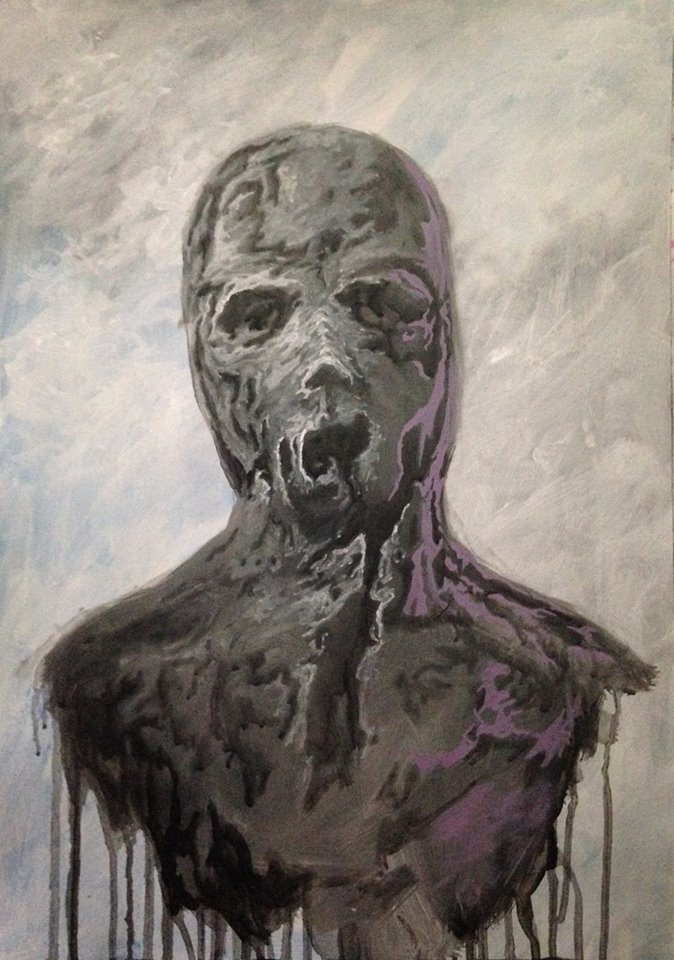
YASAW – Another creature of the night and minion of aswang, Yasaw are like children but are dark skinned and has claws, the are beloved by or they are playful and like to frighten humans but they only scare, they do not harm to humans.
Jordan Clark is a Canadian born descendant of Scottish immigrants living on the homelands of the Lekwungen speaking peoples. His interest in Philippine myth and folklore began in 2004. Finding it difficult to track down resources on the topic, he founded The Aswang Project in 2006. Shortly after, he embarked on a 5 year journey, along with producing partner Cheryl Anne del Rosario, to make the 2011 feature length documentary THE ASWANG PHENOMENON – an exploration of the aswang myth and its effects on Philippine society. In 2015 he directed “The Creatures of Philippine Mythology” web-series, which features 3 folkloric beings from the Philippines – the TIKBALANG, KAPRE and BAKUNAWA. Episodes are available to watch on YouTube. Jordan recently oversaw the editing for the English language release of Ferdinand Blumentritt’s DICCIONARIO MITOLÓGICO DE FILIPINAS (Dictionary of Philippine Mythology) and is working on two more releases with fellow creators scheduled for release later this year. When his nose isn’t in a book, he spends time with his amazing Filipina wife of 20 years and their smart and wonderful teenaged daughter.


